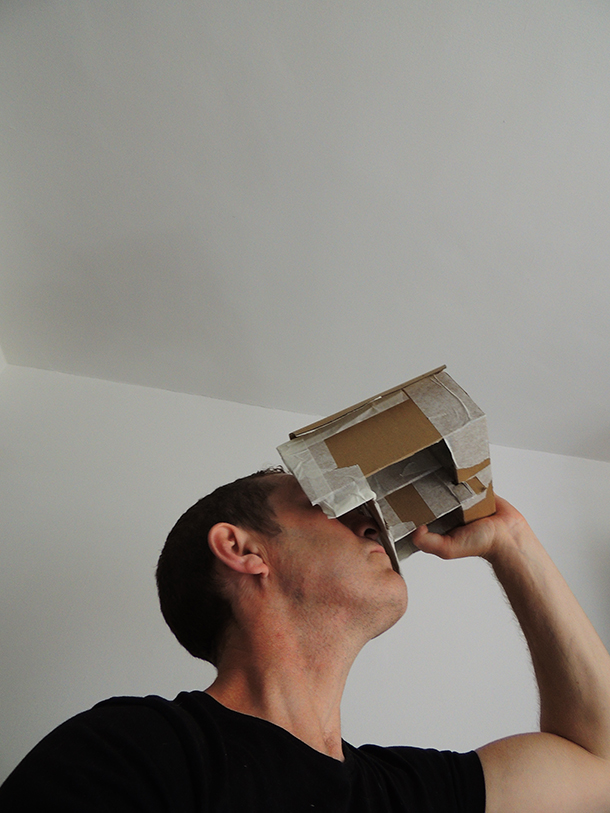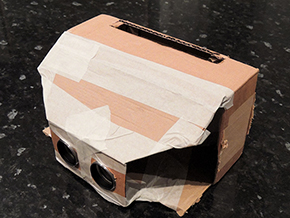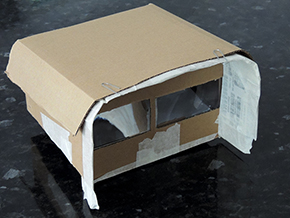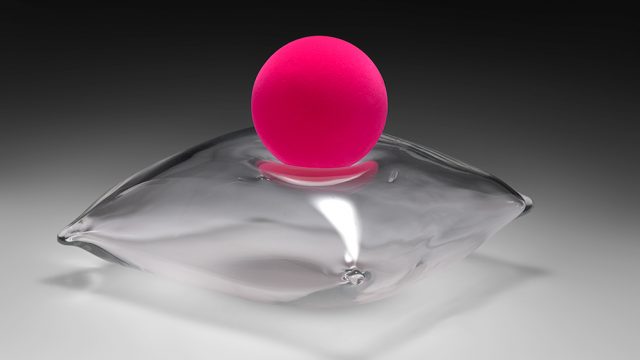V&A Director Martin Roth, recently interviewed, spoke passionately about the power of being in the presence of real objects in museums. What is better than physically being there, soaking in the powerful feelings of direct experience?
So, how does this help us design?
A team viewing/discussing/critiquing simultaneously can generate amazing creative ideas. We have found that physical things have a unique power in group creative sessions.
Here are some things we have tried and found useful…
Paper prototypes


These are cardboard mobile phones with hand drawn paper content! They were cut out with scissors and a penknife in about 20 minutes. The “interface” shown here is one of many iterations of touch-drag page navigation for a possible web application. It has working(ish) page drag. By doing it on paper roughly, ideas are knocked out faster. If it is working, it quickly becomes obvious . If it isn’t, then it is easy to scrunch it up and start again!
Models
Hey, paper is great and guess what? Cardboard is also!
This is a home made version of Google Cardboard, knocked out to see how pluasible it was for a user to make up their own headset. It turned out it is easy and could be made for virtually nothing. This made us think that such handmade hardware might have applications where looking after expensive headset is no longer an issue. Perhaps mass simultaneous use. Hmm, interesting…
Undoubtedly there is a comedy element to a digital media department presenting something made from bits of things stuck together in classic Blue Peter fashion. We could of course spend a lot more time (and a lot less fun) putting together a slick digital visualisation but it is interesting the reception a hand-made thing has when presented.
On an obvious note, a model or paper prototype can be instantly related to. These are accessible, uncomplicated, real things. They exist. They can provide serious design solutions but be fun and look silly. These are things we can feel affectionate towards. Importantly they also tend to communicate without distraction.
A digital visualisation can be distracting. Often the platform itself can get in the way of the thing being presented. Maybe it’s difficult to understand its size or get a sense of its weight, or maybe the screen size is too small or the brightness too high. The platform can divide a groups response through those that feel comfortable experiencing things digitally and those that don’t.
Putting stuff on the wall
Again, there are obvious accessibility reasons for putting stuff on the wall. Make it large with massive headings and huge images so everybody can see it. With everything now within view it’s possible to focus on content and structure rather than platform or the action of moving between content.
It’s nice to think that in a digital world there is still space for paper. NB the web page mock up on the left is about four foot tall!










Reading this a week before we started some rapid prototyping of a mobile app for a forthcoming exhibition, I was inspired by the movable parts in your paper prototypes. Today I made one of my own, with flaps that fold in when you tap parts of the screen. (We’re testing a few paper prototypes with representatives of different user groups and I want to win!)
Yeah, the physical is powerful – especially when it brings-into-the world something that doesn’t otherwise exist. The thing may already exist in your head, but it clarifies and adapts – to better fit the real world – when you make it physical.
Hi. yes it is often not until someone has shown you what they meant that it makes sense.
Descriptions of ideas do not have feeling in the same way – a bit like musical notation. It might make sense to a few people, but for most people it ain’t like hearing the music!